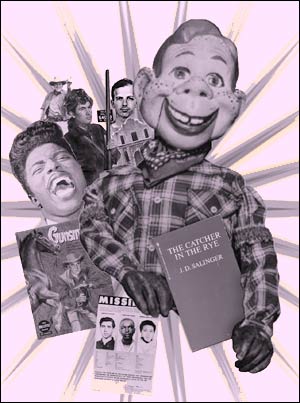Simultaneously, odd little grassroots commercial newspapers were popping up. There were genuinely profane underground-press rags like the East Village Other and the Berkeley Barb . Out in San Francisco a towering troublemaker named Bruce Brugman and his wife, Jean, started a weekly covering arts and politics called the San Francisco Bay Guardian , loosely modeled after New York’s Village Voice , the standard-bearer of progressive journalism since 1955. That same year, 1966, in Boston, Steve Mindich, not long out of BU, published a small arts-and-entertainment weekly called Boston After Dark , distributed free on campuses. A few years later, some refugees from the BU News and some fellow travelers over in Cambridge kicked off a news, arts, and politics weekly called the Cambridge Phoenix . My first BU News editor, Ray Mungo, set up camp in Washington, DC, and fed all these new papers material from a zoo-like news-gathering organization called Liberation News Service (LNS). Mindich’s Boston After Dark quickly began covering radical politics and local issues. The alternative press was being born.
It chronicled, in real time, the touchstone events, trends, and persons of its generation: Kent State murders and Watergate; Woodstock and Altamont; Janice, Jimi, and Dylan; McCarthy, Humphrey, and McGovern; the Black Panthers and the Yippies; brown rice and communes; SDS and the SLA; the Tet Offensive and Prague Spring.
Over the next few years, things blew up, fell apart, clashed, collided, shook down, evolved, hemorrhaged, and healed, and when the dust and squabbling finally settled, Boston had two alternative weeklies — the Boston Phoenix (published by Mindich, its owner and publisher to this day) and the rival Real Paper . I freelanced, writing and shooting for both Boston alts, then eventually signed on as a section editor for the Phoenix .
 |
In 1978, the Association of Alternative Newsweeklies (AAN) was formed as a means of resource sharing and mutual support among America’s disreputable young journalists. AAN, of which I decades later became president, was also a forum for heavy sectarian/political grudge matches and bitter rivalries. The young alt press attracted extremely talented people, many of whom were also outspoken, opinionated, headstrong, ideologues — often operating at the top of their lungs and under the influence of various intoxicants and narcotics. An AAN convention was, in those days, never a quiet event. On the Boston alt-wars front, ultimately, theReal Paperfolded, consumed by thePhoenix, the culmination of a remarkable series of ownership changes best enumerated in some narrower context. Yet behind all the noise, there was a core solidarity — a shared vision of reform, a common dedication to producing publications that dealt with and promoted the world as we would re-invent it. You may have heard the now-dated term “generation gap,” by which was meant the cultural and political gulf between the Greatest Generation and its young-adult children. No hollow catch phrase, that. It was a very real thing, and the drastic polarization of Vietnam-era America made it a permanent part of psyches old and young.